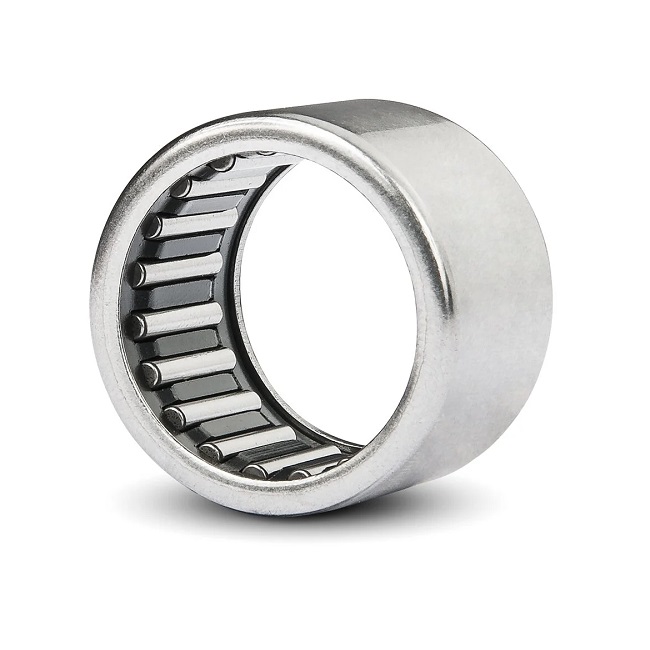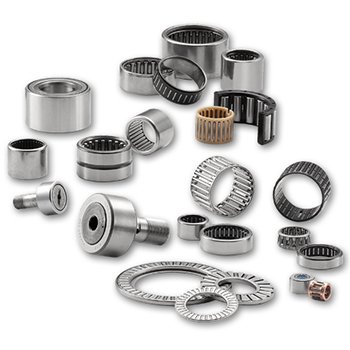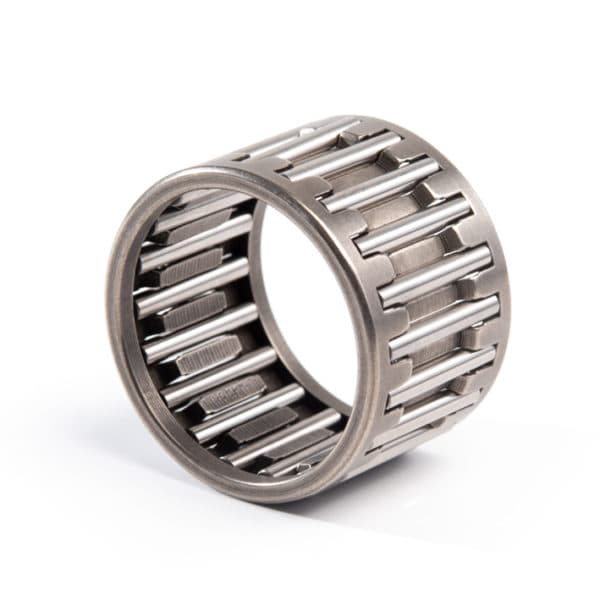Contribution of Needle Bearings to Smooth Operation of Textile Machinery
Needle bearings play a crucial role in ensuring the smooth and efficient operation of various types of textile machinery. The unique design characteristics of needle bearings make them well-suited for the demanding and dynamic environments found in textile manufacturing processes. Here’s how needle bearings contribute to the smooth operation of textile machinery:
- High Load Capacity:
Textile machinery often involves the handling of heavy loads, such as yarn packages, fabric rolls, and tensioning mechanisms. Needle bearings’ ability to accommodate high radial and axial loads ensures reliable support and smooth movement of these loads.
- Precision Movement:
Textile processes require precise and controlled movement, such as guiding threads, adjusting tension, and controlling weaving patterns. Needle bearings provide accurate motion control, enabling the machinery to perform intricate tasks with precision.
- Reduced Friction:
Efficient textile production relies on minimizing friction and energy losses. Needle bearings’ low-friction design reduces energy consumption and heat generation, contributing to the overall efficiency of the machinery.
- High Speeds:
Textile machinery often operates at high speeds, requiring components that can withstand the resulting centrifugal forces and maintain stable operation. Needle bearings are designed to handle high rotational speeds, ensuring smooth performance without compromising stability.
- Compact Design:
Textile machinery is frequently designed with limited space considerations. Needle bearings’ compact radial profile makes them suitable for applications where space is at a premium, allowing machinery to maintain efficient layouts.
- Oscillating and Reciprocating Motion:
Textile processes involve various types of motion, including oscillation and reciprocation. Needle bearings are adept at handling these dynamic motions, ensuring consistent and smooth movement of components.
- Longevity and Durability:
Textile manufacturing can be demanding on components due to frequent starts, stops, and dynamic loads. Needle bearings’ robust construction and ability to distribute loads evenly contribute to extended service life and reduced maintenance requirements.
- Varied Applications:
Needle bearings are used in a range of textile machinery, including spinning machines, weaving looms, knitting machines, winding machines, and fabric inspection equipment. Their adaptability to different applications enhances the overall functionality of textile processes.
Whether in spinning, weaving, knitting, or other stages of textile production, needle bearings are integral to the seamless operation of textile machinery. Their combination of load-carrying capacity, precision, and durability ensures that textile manufacturers can achieve consistent and high-quality results while maintaining operational efficiency.
Contribution of Needle Bearings to Efficiency and Precision in Machining Equipment
Needle bearings play a vital role in enhancing the efficiency, precision, and overall performance of various types of machining equipment. These precision bearings are specifically designed to handle high radial loads, limited installation space, and provide smooth motion. Here’s how needle bearings contribute to the efficiency and precision of machining equipment:
- Reduced Friction:
Needle bearings feature closely spaced needle rollers that offer line contact with the raceways. This design minimizes friction, allowing machining equipment to operate smoothly with less energy loss and reduced heat generation.
- High Load Capacity:
In machining processes, equipment often experiences significant radial loads. Needle bearings’ ability to distribute these loads efficiently makes them suitable for applications where heavy cutting forces or tool pressures are involved.
- Compact Design:
The compact size of needle bearings allows machinery designers to optimize space utilization in tight installations. This is particularly valuable in machining equipment where a minimal footprint is essential for precise tool positioning and accurate workpiece processing.
- Accurate Positioning:
Needle bearings provide accurate and repeatable motion, ensuring precise positioning of cutting tools, workpieces, or components. This level of precision is crucial for achieving tight tolerances and high-quality finished products.
- Smooth Motion:
The geometry of needle rollers facilitates smooth rolling motion even under heavy loads. This characteristic ensures that machining equipment can move with precision, resulting in consistent and uniform cuts or operations.
- Vibration Damping:
Needle bearings’ design and load distribution help dampen vibrations generated during machining processes. Reduced vibration enhances the overall stability of the equipment and minimizes tool chatter, contributing to smoother surface finishes.
- Enhanced Tool Life:
By minimizing friction, reducing wear, and providing reliable load distribution, needle bearings contribute to extending the lifespan of cutting tools and equipment components. This leads to reduced downtime and maintenance costs.
- High-Speed Capabilities:
Many machining processes involve high rotational speeds. Needle bearings are designed to handle moderate to high speeds while maintaining accuracy, making them suitable for operations requiring rapid tool movement.
- Customization Options:
Needle bearings are available in various designs, including drawn cup, radial, and thrust configurations. This diversity allows equipment designers to select the most suitable bearing type for each specific application.
- Reliable Performance:
Needle bearings are engineered for durability and consistent performance, even in demanding machining environments. Their reliable operation contributes to minimizing unplanned downtime and maximizing productivity.
Overall, needle bearings enable machining equipment to achieve the required precision, accuracy, and efficiency necessary for producing high-quality components and products. Their ability to handle heavy loads, reduce friction, and provide smooth motion makes them an integral component in modern machining processes.
Unique Design Features of Needle Bearings and Their Benefits
Needle bearings, also known as needle roller bearings, have a distinctive design that sets them apart from other types of bearings. This unique design offers several benefits that make needle bearings well-suited for specific applications requiring compactness, high load capacity, and efficient motion. Here are the key design features of needle bearings and their associated benefits:
- Cylindrical Rollers with High Length-to-Diameter Ratio:
Needle bearings feature cylindrical rollers with a length-to-diameter ratio much greater than conventional roller bearings. This design allows for efficient load distribution over a larger contact area, enabling needle bearings to handle high radial loads while maintaining a compact size.
- Compact Design:
The slender profile of needle rollers results in a compact bearing design. This compactness is advantageous in applications with limited installation space or weight constraints, where traditional bearings may not fit or are too heavy.
- Reduced Friction and Contact Angle:
Due to the smaller diameter of needle rollers, the contact angle with the bearing raceways is reduced. This leads to lower friction levels during operation, resulting in energy efficiency, reduced heat generation, and extended bearing life.
- High Load-Carrying Capacity:
The longer cylindrical rollers of needle bearings provide a larger contact area for load distribution. This design feature enables needle bearings to handle high radial loads, making them suitable for applications requiring substantial load capacity.
- Precise and Smooth Motion:
Needle bearings offer smoother and more precise rolling motion due to their reduced friction and smaller contact area. This characteristic is essential for applications demanding accurate and controlled movement.
- High Rigidity and Stiffness:
Despite their slender appearance, needle bearings exhibit high rigidity and stiffness. This attribute ensures minimal deflection under load and precise positioning, making them suitable for applications with strict tolerance requirements.
- Versatility and Adaptability:
The unique design of needle bearings allows for their use in various industries and applications. They can excel in situations where high load capacity and compact design are crucial, such as in automotive, aerospace, and industrial machinery.
- Reduced Heat Generation:
Efficient load distribution and reduced friction contribute to lower heat generation during operation. This not only prolongs bearing life but also enhances overall system efficiency.
- Weight Reduction:
Due to their compact design, needle bearings result in lightweight components. This is particularly beneficial in applications where minimizing weight is essential, such as in aerospace and automotive systems.
- Long Service Life:
The combination of efficient load handling, reduced friction, and durable materials contributes to extended bearing longevity. This can lead to decreased maintenance requirements and increased equipment uptime.
Overall, the unique design features of needle bearings offer numerous benefits that align with specific application requirements, making them a valuable solution for scenarios where their attributes are advantageous.
editor by CX 2024-03-29




